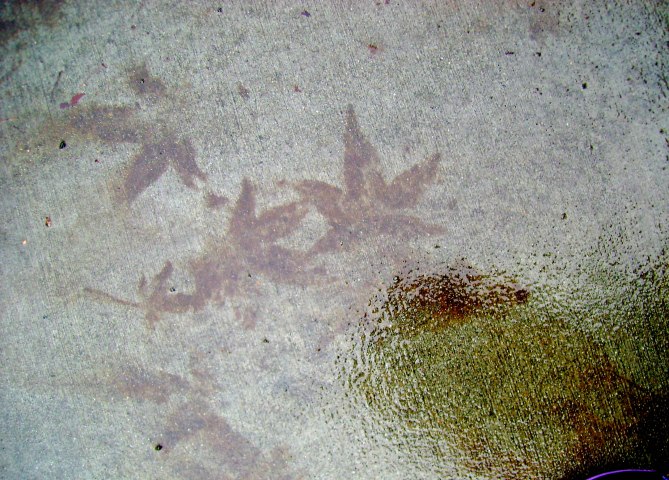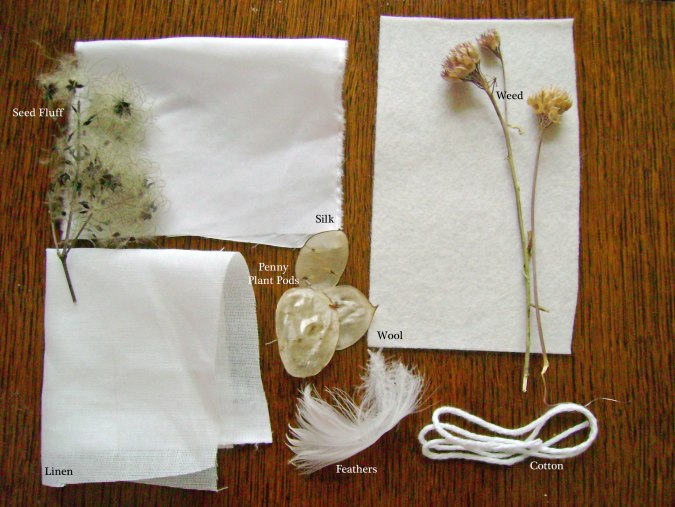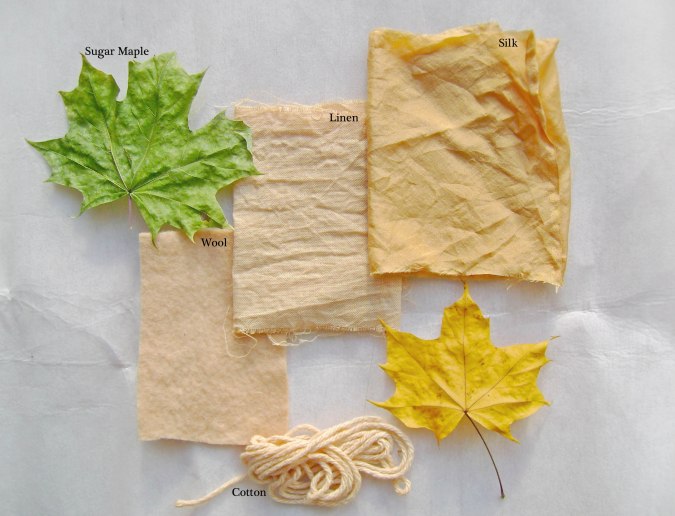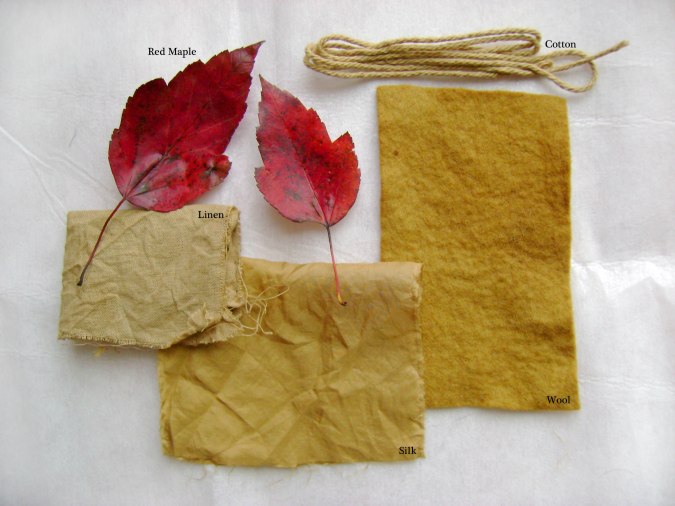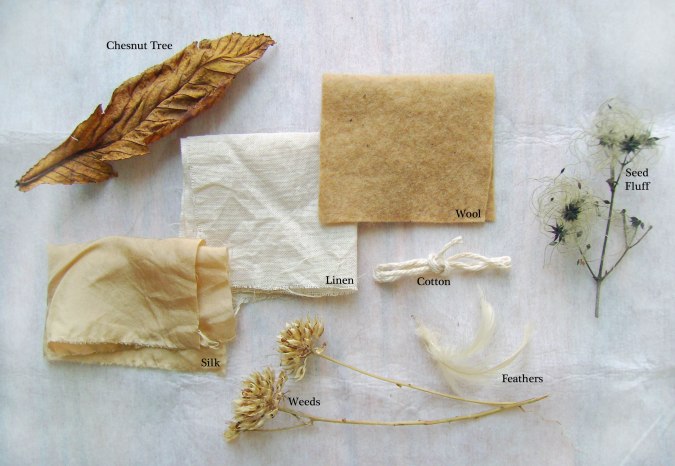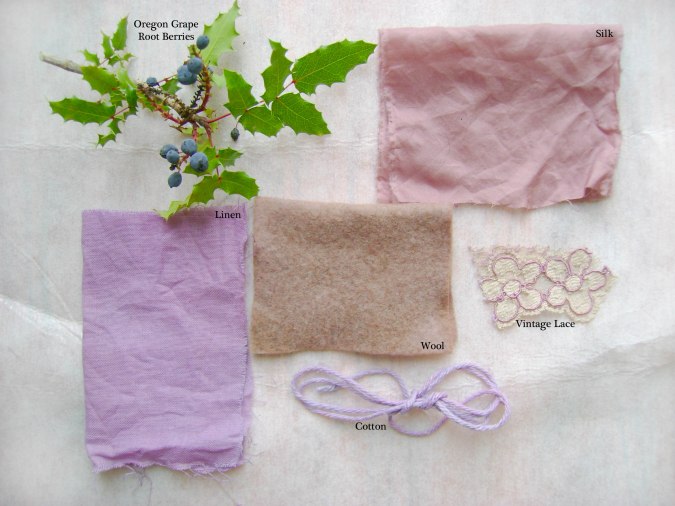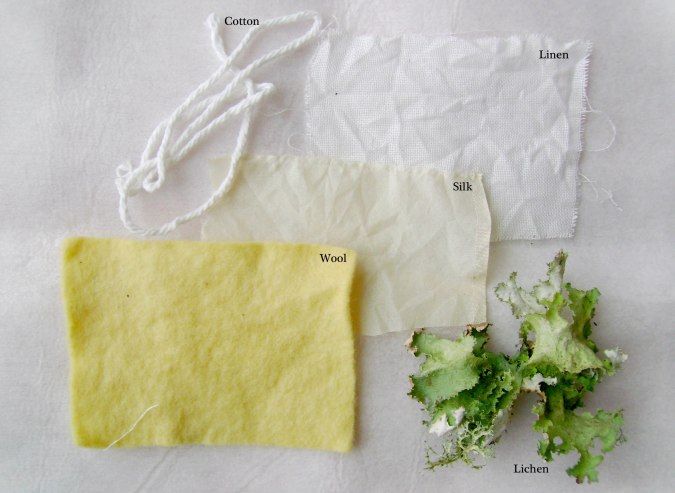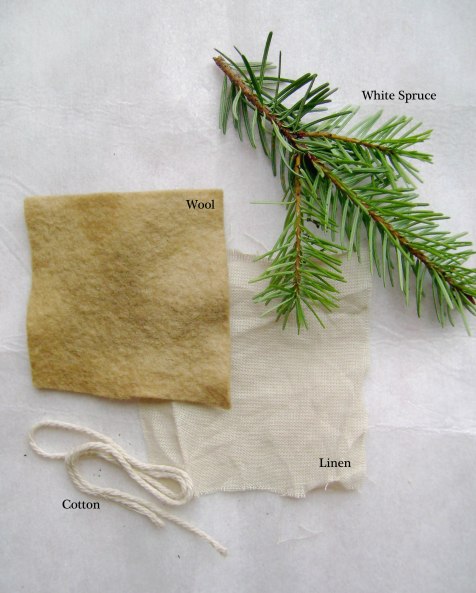If you’ve never visited the Folk Fibers blog or store you should mosey on over. Maura Ambrose is an amazing fiber artist living out her dream of hand quilting with natural dyes in Austin, TX. She is a huge inspiration to me, every time I feel discouraged or uncreative I simply think of her and remind myself that she has been able to grasp her dream and make a living from doing her art everyday. She is a wonderful lady and the one who spurred me into experimenting with natural dye techniques.
I love gathering plant materials and Fall in Seattle is a wonderful time for it, things are dying or seeding making them easy to pluck and put in a pocket or bag. The skies are usually clear and crisp and the leaves become every shade of gold, red, yellow, and brown you could imagine. After the rains began I started to notice on my walks that the leaves plastered to the concrete were leaving a pigmented silhouette of themselves.
Seeing these stains all over the city for several weeks I kept wondering if the leaves would make a usable dye. So I sent Maura a message asking her thoughts, and she had never experimented with leaves but thought it would work. Encouraged, I got a hold of some natural white fabrics at Nancy’s Sewing Basket and started gathering leaves.
(I won’t go into the how of creating a dye bath on this post just visit Maura’s blog for the excellent tutorials.)
My only qualm about doing these little experiments was simply the purpose, I couldn’t think of anything I could use the dyed fabrics for. I am not a quilter or really a sewer, I don’t typically work with fabrics that often and I made several swatch tests before it hit me. I could dye the wool I use for my hats!
I’m really not sure why this didn’t come to me sooner. I can only assume because I had been buying colored wool fabric for so long and Maura talks about using cotton mostly on her blog that I totally blanked on it.
I gather most of the plant and animal materials that go into making my hat and to also start dyeing the fabric with gathered plant materials gives me a certain satisfaction of complexity that I can only contribute to my whimsical nature.
This is when the adventure in dye really began in earnest.
The first dye bath I made was from what I believe to be a Sugar Maple (I’m not hundred percent because there are so many dang kinds of Maples in Seattle) I used the green leaves from a fallen branch. The Sugar Maple created a creamy golden yellow with pink undertones on all the fabrics. Next year I may try the yellow leaves after they’ve turned and see if it creates a different color.
I next tried using the fallen red leaves from what I believe to be a Red Maple (again I’m not positive). It’s interesting to me the variety of color I got between the two Maples. The Red Maple created a much darker rich golden brown especially on the animal based fabrics (wool and silk) and a more subdued brown on the plant based fabrics (cotton and linen).
——
——-
I tried Chestnut Tree Leaves next because I had come across a bunch of them freshly mowed to tiny pieces seeming to stain the grass in giant circles around the trees a vivid red brown. So taking a chance I gathered a bunch of whole fallen leaves.
I also decided to try adding some plant materials to this dye bath along with feathers to see if any of my other materials could be dyed. The simmering was too much for the delicate materials though, the plants almost disintegrated and the feathers lost their fluff, so I won’t try it again.
I didn’t get the lovely red brown I was hoping for but I did get a nice light brown color on the wool.
————
Emboldened with the ease of the process and so curious to find out the color of every plant around me I decided to try some different plant parts.
I gathered the last of the Oregon Grape Root Berries that I could find of the season (it was a bit late in the year for this, they’re usually at their height towards the end of summer).
I only had a handful but it went a long way. I got some amazing purples on the plant based fabrics, a more subdued mauve on the silk and an almost brown color on the wool. I may try dyeing the wool again with another batch of berries next year to see if I can bring out the purple more.
A bit of caution here. This dye bath really smells terrible, the leaves had a lovely herbal smell while they simmered but the berries were surprisingly nauseating. They also left a sour smell on the wool in particular, so I’ll have to steam in with essential oils a bit before working with it.
—–
After reading one of Maura’s post about dyeing with mushrooms I became really curious about trying new and usual things to dye with.
I had the idea of dyeing with lichen, it grows in abundance in this wet climate and is unique in the plant kingdom in that it is a symbiosis of fungi and algae growing together. Native people have also used it traditionally to dye with.
So I gathered some kind of Foilose Lichen (I haven’t been able to identify it) from a bunch of fallen branches in the woods and brought it home to play with. I have to say I love lichen, I think it is so neat. I already have several different species hanging out with my indoor plants as well as flower essence I created when I lived in Texas. So I was really excited to see what color I would get.
I was pleasantly surprised with a beautiful sunny yellow green color on the wool and a more subdued tone on the silk. It’s interesting that the plant based fabrics would not hold the dye and stayed white.
The lichen also imparted an amazing scent on the fabric. I can only describe it as smelling like Oakmoss Absolute (which is made from a certain species of aged lichen) which I often use in my perfumes. It is a musky woody scent that reminds me of ozone and fur.
——
I was now interested in finding another plant material that would imbue fabric with scent, it seemed like a lovely layer to play with when making hats.
So I gathered some White Spruce twigs. I should have stripped the needles from the woody parts to see what color they would’ve made alone but I just threw the whole thing.
The dye bath did give off an amazing scent while simmering but the fabric didn’t hold on to it and I ended up with just another nice brown tone fabric.
—-
I’m hoping to experiment with other scents and fabric, I’m thinking the wild yarrow and fennel that grows in the area may be worth trying as well as the local Eucalyptus tree.
It seems like every where I go now I can’t keep myself from wondering what kind of dye a certain plant or berry or lichen or mushroom I see will create. It’s a really fun process.
I’ll post more as my adventures continue!

